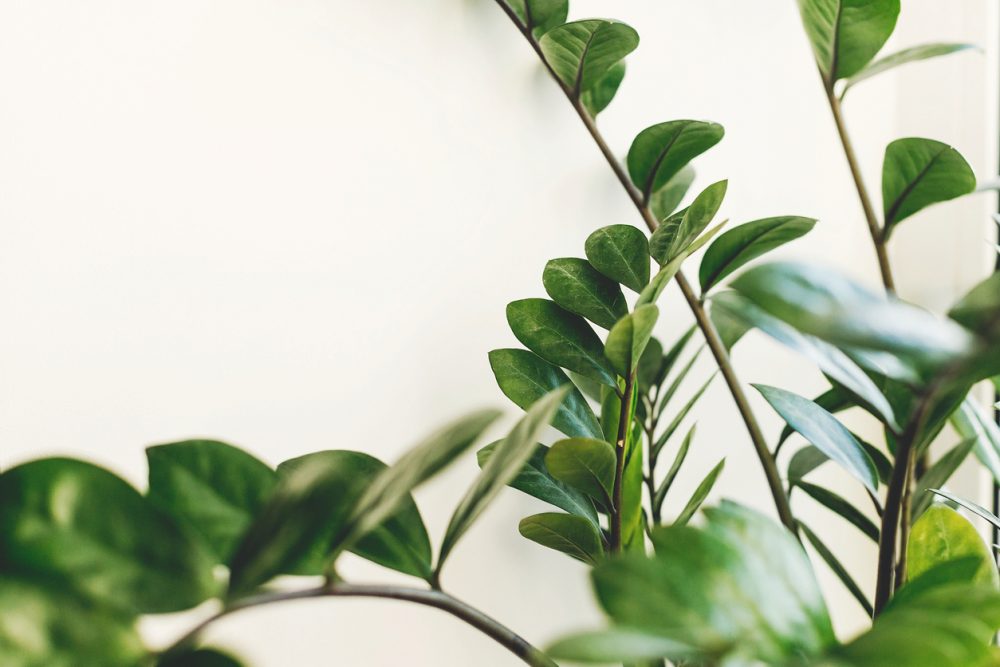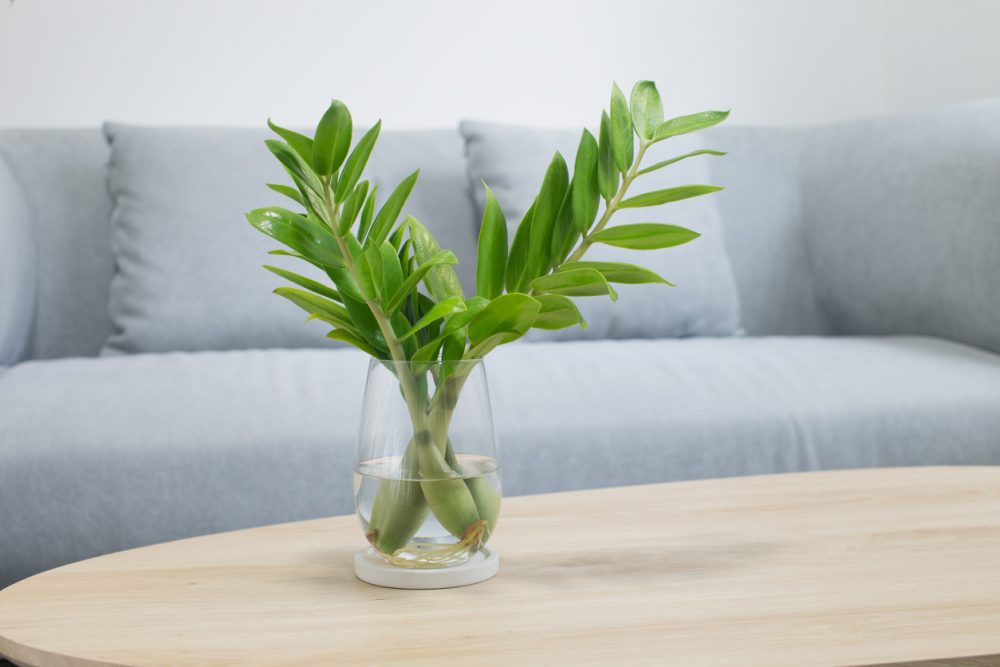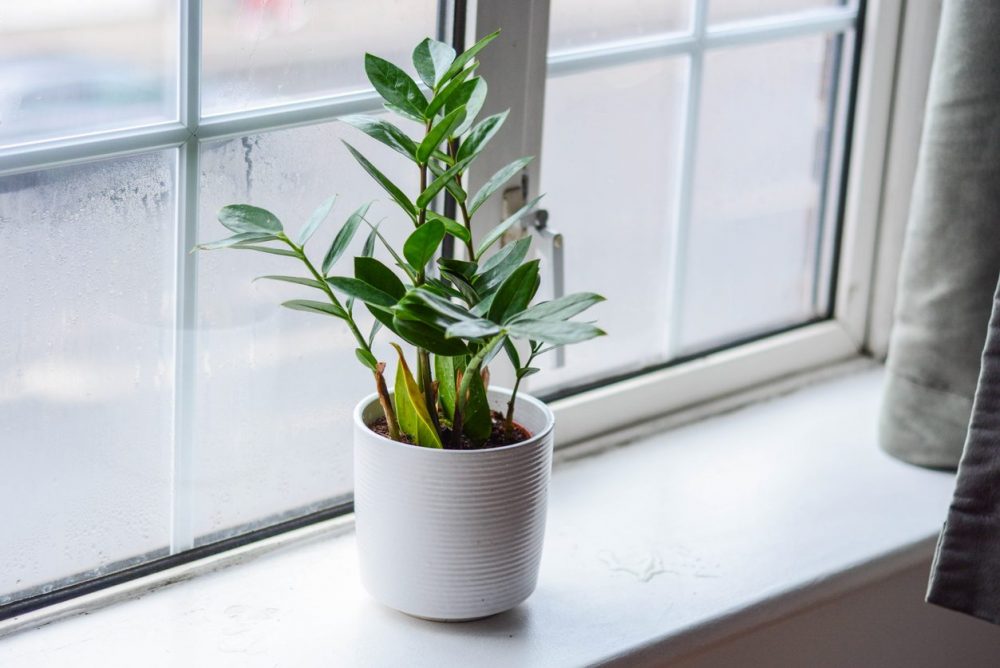ZZ Plant Care – How To Grow ZZ Plants
No houseplant collection is complete without the ZZ plant. It’s a fact that every gardener and horticulturist worth their salt knows only too well. You don’t have to be an expert to grow the ZZ plant at home. It practically doesn’t need much in the way of feeding, watering, or even pruning. If you have never heard about the ZZ plant before, you’d be surprised at how it grows in just about any light, from the bright to the dim. So how come it’s not in every household? Well, for one thing, the ZZ plant is very poisonous, so you need to be careful when you handle them.
Here we’ll cover everything you need to know about the ZZ plant. From how to grow and propagate it to the best ways to make it safe despite its high toxicity around your children and pets.
What is a ZZ plant?
The ZZ plant (Zamioculcas zamiifolia) is a native of South Africa, where the rain is infrequent, and drought pretty much is the norm. This is why this plant which sounds like a rock band, is so hardy and can tolerate dry soil better than any other plant you grow at home. But that’s just one of many attractions that make the ZZ plant a favorite in many homes and offices.
The ZZ plant is easy to propagate. In fact, it doesn’t even need an excuse to sprout and grow. That’s how it made its way out of Africa to invade every corner of the world. And since it is not such a fussy plant and doesn’t need much space, it became the ideal indoor plant to decorate your office or living area.
At full maturity, the ZZ plant doesn’t grow an inch over 3 feet. This rhizome plant displays bright green leaves that are welcome in any setting. The leaves are fleshy, and each is about two inches long and one inch wide. And since it’s a slow grower that takes a few years to reach its maximum height, you won’t have to worry too much about pruning it or managing its branches.
While it resembles many other tree plants, the stems of the ZZ plant tend to take different shapes as they grow. Some will grow straight up, while others will arch and sway to create a dynamic shape. This allows you to create any shape or design you like using nothing more than a pair of pruning scissors.
Are ZZ Plants Poisonous?
Before we go any further, we need to talk about one glaring fact about the ZZ plant that makes many people wary about growing it at home. I’m talking about its toxicity. The ZZ plant is highly toxic to cats and dogs and poses a risk to any household that has a hyperactive dog or a curious cat in it. You might have heard that the plant caused cancer. But there are just baseless rumors with no scientific evidence to back them up.
What’s real, though, is that you need to be careful when you handle this plant. First and foremost, you should keep it away from the reach of your children and pets. The flesh and bright leaves are an open invitation to your dog or cat to nibble them. Even children won’t mind examining the leaves. This is a health risk, and you need to seek medical help immediately if anyone ingests the leaves of the ZZ plant. And always wear gloves when you care for this plant.
How to Grow ZZ Plant
The first nurseries to grow and propagate the ZZ plant in South Africa were astonished at how easily they could grow it. It handles itself well, even in harsh conditions. What’s even more amazing is that you can grow it in different ways. Here we will discuss the possible ways you can grow and propagate the ZZ plant.
Leaf Cuttings
One of the easiest ways to grow the ZZ plant is through leaf cuttings. Here’s how you can go about it.
- Use a sharp knife to cut the leaf as close to the stem as possible.
- Remove any leaflets hanging at the base of the leaf.
- Fill a small pot with a well-drained potting mix. Make sure the pot has plenty of drainage holes at the bottom.
- Water the pot enough to make the soil moist but not wet. If you overwater it, wait for the soil to lose most of that water.
- Dig a hole in the moist soil and plant the leaf. Fill the hole with soil and pack it gently, making sure the leaf stands upright.
- Keep the soil moist until rhizomes grow out of the base of the leaf-cutting.
- It will take the cutting anywhere from a couple of months to a year to grow the rhizome and become a new plant.
Rhizomes
When you have a healthy ZZ plant, you can always divide it and grow two or more plants out of it. It’s a less straightforward process than using leaf cuttings. However, you won’t have to wait for months to have a new ZZ plant. The only caveat here is that you need to wait for a few years before you divide the plant again.
- Decide how many new plants you plan to grow and prepare a small pot for each one.
- Fill the pots with a potting mix and check they have drainage holes at the bottom.
- Use a knife to loosen the soil of the mother plant from the pot. Be careful not to damage the roots.
- Place the pot at its side and gently ease the ZZ plant out of the pot.
- Grasp the plant firmly with one hand and remove the soil away from the roots carefully.
- Remove any damaged or rotten leaves using clean scissors.
- Look for natural division lines in the root system of the mother ZZ plant.
- Mark the division lines and use a knife to separate the roots and rhizomes as cleanly as possible.
- Plant each division in its own pot and water until the soil is soaked and water flows out of the drainage holes.
- It will take anywhere between a few weeks to a couple of months before each new plant shows signs of growth.
Leaflets
This method of growing ZZ plants from leaflets is very much similar to using leaf cuttings. The only difference is that you need to ensure each leaflet you plan to grow has its own stem. Place it in the pot at a 45-degree angle to prevent leaf rot and improve aeration. Cover the pot or container with a lid and keep it in a warm place. Keep the soil moist all the time, and don’t let it go dry. The new plant will start to grow after a few months.
ZZ Plant Care
After exploring the different ways you can grow the ZZ plant and settling on the one you prefer, let’s take a look at how you can care for your new plant or plants. The good news is, you won’t have to worry about watering or feeding the ZZ plant regularly. If you happen to have a busy life and tend to forget to water your plants, the ZZ plant won’t mind.
Light
While you can certainly grow the ZZ plant in low-light, this is not the ideal exposure it needs. If you really want those flesh green leaves to look their best, you should provide medium-light in the room. Dim-lit rooms or offices mean the slow growth rate of the plant will be even slower. It will take years for the plant to reach maturity. So place it near a window that gets some sunlight without exposing it directly to the sun. Sunburns are common issues with the ZZ plant, and they ruin the beauty of the lush green leaves.
Humidity
The ZZ plant is used to high levels of humidity in its native tropical habitat. However, that doesn’t mean that it won’t grow well in your home or office, where the air conditioning system sucks the humidity out of the air. The only issue you might have with low humidity is brown leaf tips. However, you can easily remedy that. Place the pot in a tray full of rocks and water. You can also mist the plant twice a week to improve the humidity levels around the leaves.
Fertilizer
As a low-maintenance plant that makes do with what little it has, the ZZ plant doesn’t need fertilizing. If you want to speed up the growth rate and have those attractive leaves show all their green splendor, you can give it little doses of nitrogen-high fertilizer. You can also use organic compost to nourish the plant for months with its slow-release nutrients. If you use chemical fertilizers, avoid sprinkling them near the base of the plant to avoid burning the roots. Some experts recommend using liquid kelp as a safe fertilizer for this houseplant.
Pruning
With a plant that takes years to reach maturity, the ZZ plant hardly needs any pruning. You can leave it to grow and take whatever natural shape it likes as well as move it to a bigger pot when it grows. You might prefer that natural look, especially if you don’t have the time to prune it. However, you can always take the pruning scissors and snip and trim the leaves and stems into whatever shape or design you like. Keep in mind that the ZZ plant is toxic, and you should always wear protective gloves when you touch it, whether to feed it, water it, or trim it. Also, for safety, you should wear glasses to protect your eyes against flying debris when pruning the ZZ plant.


